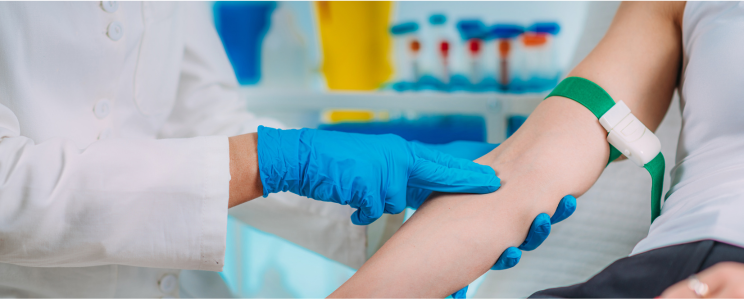Northeast Medical Institute - New Haven Campus Phlebotomy Course & Cna Class for Dummies
Northeast Medical Institute - New Haven Campus Phlebotomy Course & Cna Class for Dummies
Blog Article
Excitement About Northeast Medical Institute - New Haven Campus Phlebotomy Course & Cna Class
Table of Contents8 Simple Techniques For Northeast Medical Institute - New Haven Campus Phlebotomy Course & Cna ClassThe Ultimate Guide To Northeast Medical Institute - New Haven Campus Phlebotomy Course & Cna ClassThe smart Trick of Northeast Medical Institute - New Haven Campus Phlebotomy Course & Cna Class That Nobody is Talking AboutThe Ultimate Guide To Northeast Medical Institute - New Haven Campus Phlebotomy Course & Cna ClassSome Ideas on Northeast Medical Institute - New Haven Campus Phlebotomy Course & Cna Class You Need To KnowThe Single Strategy To Use For Northeast Medical Institute - New Haven Campus Phlebotomy Course & Cna Class
The use of such tools should be accompanied by other infection prevention and control practices, and training in their usage. Not all safety gadgets are appropriate to phlebotomy. Prior to picking a safety-engineered gadget, users should extensively explore readily available devices to establish their proper use, compatibility with existing phlebotomy techniques, and efficiency in shielding staff and clients (12, 33).For settings with reduced resources, cost is a driving element in procurement of safety-engineered devices. Where safety-engineered tools are not available, experienced use of a needle and syringe is acceptable.
labelling); transportation problems; interpretation of outcomes for clinical administration. In an outpatient division or clinic, supply a dedicated phlebotomy workstation containing: a tidy surface area with two chairs (one for the phlebotomist and the various other for the person); a hand wash container with soap, running water and paper towels; alcohol hand rub. In the blood-sampling area for an outpatient department or center, give a comfortable reclining couch with an arm rest.
8 Simple Techniques For Northeast Medical Institute - New Haven Campus Phlebotomy Course & Cna Class
Make sure that the indicators for blood tasting are clearly defined, either in a written method or in documented directions (e.g. in a laboratory form). In all times, follow the strategies for infection avoidance and control detailed in Table 2.2. Infection prevention and control practices. Accumulate all the devices needed for the procedure and place it within secure and simple reach on a tray or cart, ensuring that all the items are clearly noticeable.
Introduce yourself to the person, and ask the client to specify their complete name. Examine that the lab kind matches the patient's identity (i.e. match the client's information with the research laboratory form, to guarantee precise identification).
Make the patient comfortable in a supine placement (if feasible). The person has a right to reject a test at any time before the blood sampling, so it is essential to guarantee that the client has understood the procedure - Phlebotomy Classes.
The Only Guide to Northeast Medical Institute - New Haven Campus Phlebotomy Course & Cna Class
Prolong the person's arm and examine the antecubital fossa or forearm. Find a blood vessel of a good size that is visible, straight and clear.
DO NOT insert the needle where veins are diverting, because this increases the chance of a haematoma. Locating the vein will help in identifying the appropriate size of needle.
Haemolysis, contamination and presence Visit This Link of intravenous liquid and medicine can all change the results (39. Nursing staff and physicians may access main venous lines for samplings complying with protocols. Specimens from central lines carry a danger of contamination or wrong laboratory test results. It is acceptable, yet not ideal, to injure specimens when first introducing an in-dwelling venous gadget, prior to attaching the cannula to the intravenous fluids.
The 6-Minute Rule for Northeast Medical Institute - New Haven Campus Phlebotomy Course & Cna Class
Permit the area to completely dry. Failure to allow adequate call time raises the threat of contamination. DO NOT touch the cleansed website; particularly, DO NOT place a finger over the capillary to direct the shaft of the revealed needle. It the site is touched, repeat the sanitation. Perform venepuncture as adheres to.
Ask the person to form a clenched fist so the blood vessels are much more noticeable. Enter the capillary promptly at a 30 level angle or less, and remain to present the needle along the vein at the most convenient angle of entry - Phlebotomy Classes. As soon as sufficient blood has been gathered, launch the tourniquet prior to withdrawing the needle
The 45-Second Trick For Northeast Medical Institute - New Haven Campus Phlebotomy Course & Cna Class
Take out the needle delicately and apply mild pressure to the site with a tidy gauze or dry cotton-wool ball. Ask the client to hold the gauze or cotton wool in place, with the arm expanded and increased. Ask the client NOT to bend the arm, due to the fact that doing so causes a haematoma.
The Best Guide To Northeast Medical Institute - New Haven Campus Phlebotomy Course & Cna Class
Do not press the syringe bettor because extra pressure increases the threat of haemolysis. Where possible, keep televisions in a rack and relocate the shelf in the direction of you. Inject downwards right into the ideal coloured stopper. DO NOT eliminate the stopper since it will release the vacuum cleaner. If the sample tube does not have a rubber stopper, infuse very gradually into the tube as decreasing the pressure and velocity used to transfer the specimen decreases the risk of haemolysis.

Report this page